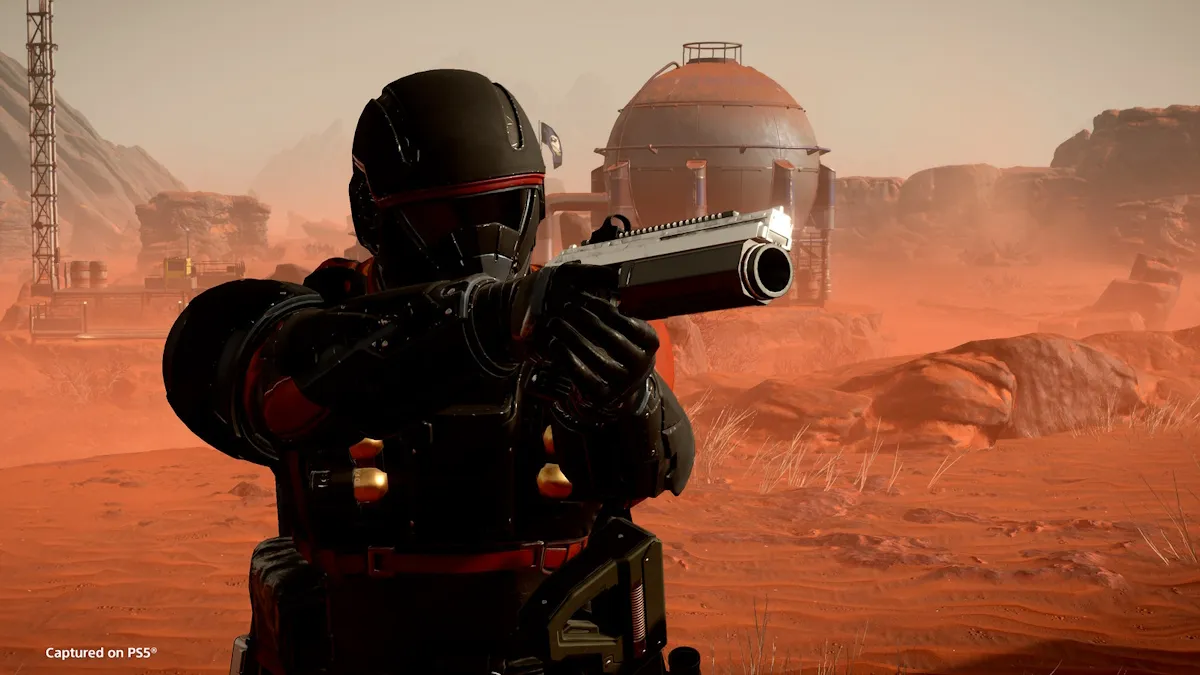As someone who has only recently come to possess a PlayStation 3, I have paid almost no attention to Heavy Rain. Creating anticipation in myself for a game for which I do not have the hardware generally holds little appeal. So it was with an open mind and very few expectations that I found myself with the opportunity to experience the first hands-on demonstration of the title back in April.
I was completely unprepared for what I was going to witness. Quantic Dream’s long-running project is one of the most intriguing and exciting prospects I have seen in years. I feel incredibly fortunate to have had the opportunity to see and play a brief scene of the game as well as sit down with lead designer David Cage to gain further insight on the project.
And now it is my honor to tell you all about it. Hit the jump to find out what I’ve been positively dying to say for over a month now.

Heavy Rain (PlayStation 3)
Developer: Quantic Dream
Publisher: Sony
To be released: TBA
Heavy Rain is truly unique. It feels similar in some ways to the adventure games of old and bears more than a passing similarity to Quantic Dream’s previous game, Indigo Prophecy. When I asked David Cage what Heavy Rain was attempting to be, he referred to it as “an emotional journey.”
“Story is the core essence of the experience that we’re trying to create where in most games the story is just the kind of layer that puts the levels together,” he clarified. “Once you decide that story is the core engine of your games, well, it makes you make decisions as to how to play the story. You need to build characters, you need to create difficult situations, you need to create moral choices for the player that won’t be black and white that will be really difficult to answer. We want players to ask themselves, ‘What would I do if it were happening to me?’ and the answer [to not be] obvious.”
Our gameplay demo revolved around Norman Jayder, a 29-year-old FBI profiler. He has a nasty drug addiction that he has kept secret for years and is trying to rid himself of. His investigation into the Origami Killer has led him to Mad Jack, a fence for stolen cars who is believed to have sold a vehicle found at the most recent crime scene to the serial murderer.
Norman is the first to be revealed of the four primary characters in Heavy Rain. We have been told that information on the other characters will be released one at a time as we get closer to the game’s launch.

The demonstration began with Norman exiting his car and walking through the auto wrecking yard. From the very first moment, the visuals are jaw-droppingly good. Norman’s animations are highly fluid with crisp and detailed textures. Realistic rain pelts the character and the ground, giving an odd beauty to what is a grimy and inhospitable environment. It is truly a feast for the eyes.
As Norman walked, we were shown the game’s “thought system.” At any time, a player can see topics that are currently on their character’s mind and listen to what those thoughts are. These appear in the form of 3D animated boxes that float around the character containing a keyword and the specific button the player can press to hear more. The game’s dialogue trees function in this same way.
What’s interesting about this mechanic is that it is designed to represent the character’s emotional state as well as what they are thinking about. In the example we were shown, the prompts moved lazily around Norman because he was calm. When confused or anxious, the prompts may move quickly or erratically. They may blur or become otherwise difficult to select. This could result in a player inadvertently saying something that they might not have meant to say, just as people often do in real life.

“In most games, you go through very basic emotions,” Cage commented to me later. “You go through frustration, excitement, competition… these are the kinds of emotions you feel playing most games. There are a couple of exceptions. But when you look at movies or literature or theater, you get a wider range of emotions. Even art in general. You can feel sad looking at a painting or you can laugh watching a theater or you can feel empathy for a character or you can feel pity. In games we have failed to trigger these emotions so far. We’ve really stayed with very primary emotions.”
The potential for creating a unique experience using a system like this is considerable. Conceptually, it goes beyond the standard idea of a dialogue tree by helping the player identify more closely with how the character feels, further immersing them in their personal story.
Moving forward, our hosts walked Norman into a garage, where we were first introduced to Mad Jack. The man is a huge, terrifying individual who physically would make 50 Cent look like Will Smith. After an exchange of unpleasantries between the agent and the fence, Mad Jack leaves, allowing Norman to search the garage for evidence that the car had been here. To do this, Norman equips a special tool called an Added Reality Interface (ARI).

The ARI is a prototype investigative tool consisting of a pair of glasses and a glove containing delicate sensors. Wearing the glasses allows Norman to see things such as faded footprints or trace amounts of chemicals and blood that would be invisible to the eye. Touching these bits of potential evidence with the glove will analyze them and display information in the lenses of the glasses (represented to the player via HUD).
After examining a few objects in the environment, Norman focuses his attention on a set of footprints and a trail of blood, which suggest that someone was dragged into an acid bath. Investigating the bath turns up a human skull and the sound of a pistol being cocked as Mad Jack places a gun to the back of Norman’s head. Realizing that he’s been found out, the killer has decided to dispose of the troublesome Fed and begins walking him to the back of the garage.

As Norman is being led at gunpoint, a button prompt appears and the G-man feigns tripping on a board in order to grab a wrench from the floor. Swinging upward, Norman knocks the gun from Mad Jack’s hand and a brawl ensues. This action sequence takes the form of a quick-time event but differs from most games, which use the mechanic in a couple of fundamental ways.
While QTEs are usually designed in such a way that the player must successfully complete the sequence perfectly to progress, Heavy Rain does not necessarily require absolute precision. Failure to execute the correct action won’t end a sequence, but instead results in a different animation, further personalizing the experience. There is still risk, however, as failing too frequently or at the wrong time could bring a character’s life to a premature end.
In addition to the possibilities opened up by a more liberal view of success and failure, action sequences also have multiple options available to the player. More than one possible action prompt will sometimes be available with differing results. These can be as simple as button presses or could involve specific motions of the analog sticks and even motion controls.

I asked David Cage why this style was used. “Because the idea is a very interesting one,” he replied. “It’s about the fact that what matters in an action sequence is not where you go but it’s the timing and the move that you do. Can you do the right thing in the right timing? What quick-time events do is interesting and it’s consistent with this type of action. It’s how we do it that is important. It’s the implementation.”
The implementation is quite interesting, indeed. QTEs are often used to generate a sense of risk or tension but the straightfowardness of the standard success/failure conditions essentially boils down to the same experience every time you encounter the format. The use of the mechanic in Heavy Rain is significantly more intense because the sequences wind up feeling more realistic, more open to possibility. Death could still come at any moment, but the uncertainty engendered by this play style keeps you more on your toes while seeming infinitely more fair at the same time.
The fight moves all around the garage, across the top of a car and ends with Mad Jack crashing into a pile of barrels along a wall. The tables turned, Norman pulls his own firearm and begins interrogating the prone murderer. Dialogue prompts begin to move with keywords representing various techniques the agent can choose to convince Mad Jack to tell him what he knows about the Origami Killer.

Options range from offering to ignore other transgressions to threatening the thug’s life. The conversational choices feel very organic and flow into one another well. The resulting experience is very different depending on the tactics used. For example, the demonstrator took us through a series of several prompts that eventually ended the conversation in success. When I had the opportunity to try it for myself, I took the more aggressive route of wasting no time in idle chit-chat and just fired a round over the bad guy’s shoulder to show I meant business.
As Norman is preparing to cuff Mad Jack and take him away, his vision begins to blur. He’s suffering from withdrawal of the drug to which he is addicted. In order to maintain focus, prompt after prompt appears on the screen, commanding that multiple buttons be held down. Triggers, face buttons and d-pad are all used and the number of buttons quickly grows to encompass most of the controller. The difficult — though I’m told, possible — maneuver reflects panic in the character exceptionally well, as failing either to hit the next correct button of the sequence in time or accidentally releasing one of the prior buttons causes Norman to collapse on the ground and fall unconscious, the screen fading to black.

When the lights come back on, Norman is inside his car with his hands cuffed to the steering wheel. The car is being carried to the crusher in a crane by Mad Jack. Prompts appear offering options to attempt escape. Moving the Sixaxis upward makes Norman tug on the cuffs.
Eventually, the agent attempts to open the glovebox with his foot, accidentally turning the radio on before succeeding and revealing the spare pistol stored within. Another kick and the gun is on the dash and sliding across the car to Norman’s waiting hand. Now armed, he twists his arm and shoots the cuffs to break them and begins to climb out the open driver’s side window as the car is dropped in the crusher.
In the presentation of this scene, Norman manages to get out of the car. This was not the case when I played through. In the interests of both time and a desire to see a different conclusion, we allowed Norman to become ground up with the splintering shards of his vehicle in my hands-on play. The result was a visceral, gruesome sight as he disappeared feet-first into the grinding gears of the crusher.

Were I playing the final release of Heavy Rain, that would have been the end of Norman Jayder. The remainder of the story would take place without his involvement or perspective on events. This encounter takes place around the midpoint of the game and, prior to this point, characters are not placed in a position where consequences may be fatal.
“What we want to do is build the characters, build your relationship with them, create empathy and get you to a stage where you really care about them,” Cage explains. “The idea is to have a real emotional impact. I mean, you will be really scared of losing them. If you lose them, you will be really sad but the story will move on.”
The presentation continued for a bit beyond where I was able to play, as Norman escapes the car. A look at the cabin of the still-moving crane finds it to be empty, and Mad Jack nearly gets the jump on the beleaguered agent. Another brief scuffle follows, with Mad Jack ultimately crushed beneath the treads of his crane with a satisfying crunch, ending the scene.

I can honestly say that I’ve never before seen anything quite like Heavy Rain. The title was still yet to reach the alpha stage of testing as of when I had the chance to play it, and it clearly had a few bugs (I was told, in fact, that creation of the entire scene occurred only within the three weeks leading up to the preview event). The potential is staggering, however, with a clear emphasis on getting inside the heads of the four protagonists and fully immersing the player in their stories.
As I mentioned in the introduction to this post, I really had very little idea what this game was going to be like. And, at this point, that may still largely be the case, as this is only a small sliver with a lot more information and demonstrations likely to come. The techniques being implemented by Quantic Dream are presenting a lot of new ideas and opportunities to take us closer to characters than ever before, and this is clearly a PlayStation 3 exclusive that everyone should be paying close attention to as development progresses.




